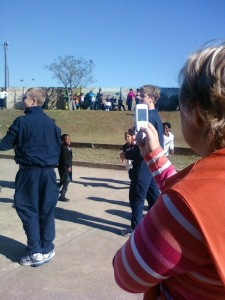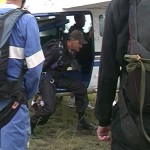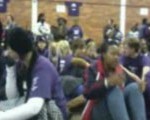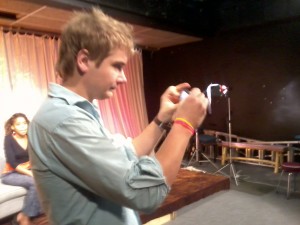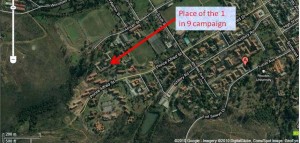It wasn\’t easy, but it was hope that pulled us through
By: Bongeka Gumede and Nonceba Mhlauli
Working with Andile Nayika was a challenging yet fulfilling and rewarding experience for us. He was eager to learn yet highly constrained by time and other commitments and this posed a great problem for us in the beginning. As time went on however, we became accustomed to his time schedule and managed to work around this issue.
The first time we met Andile he seemed quiet, reserved and very busy. Having recently been promoted from being a citizen journalist to an intern, he appeared as though he was too pre-occupied with trying to find his feet as a new intern at Grocotts Mail. We suffered from time constraints. Since Andile had recently lost his phone we also lacked a video camera which was needed for his stories and furthermore, as a consequence of having no phone there was a communication barrier which meant that we could not easily get a hold of him. In spite of all these obstacles, we overcame and managed to complete the tasks laid before us as a team.
From our very first meeting with Andile it was evident that he had a lot of knowledge about news and journalism in general, he had many great story ideas however they were only conducive for newspaper articles and we had to assist him to channel his mind towards story ideas which would be rich in visual content. We had to encourage him to move away from stories that contained a lot of facts which could only be expressed in words and to focus on the visual element of a story instead.
Andile’s interest in stories pertaining to service delivery issues took us by surprise. We expected him to be an arts-oriented person since we were aware of his love for poetry and other forms of entertainment as well as interest in youth issues. He felt very strongly about the fact that the children in his neighbourhood are forced to play near a dumpsite due to lack of recreational facilities and we encouraged him to pursue this story.
Once Andile had decided on a story we shared our knowledge of how to make a video with him. We told him the basics about the five-shot rule, the rule of thirds and how to shoot good sequences. We taught him how important the elements of sound and lighting are in a video as well as how to ensure that the sound and the light came out right in a video. He grasped the concepts easily and this understanding was reflected in the first piece that he was assigned to do. We were pleased with the outcome of his 10 second video clip as well as the blurb which accompanied it.
For the second assignment we had to assist Andile to produce a 30 second- 1minute clip and for this task, he chose to expand on his dumpsite story which we thought was a good idea. Unfortunately, however, it became very difficult to get a hold of Andile after the first assignment and once we did get a hold of him we could not set up a time convenient for all of us because his own work as an intern at Grocotts Mail was demanding and time- consuming to the point where the work we needed him to do was becoming a burden to him.
He embarked on the mission to cover the dumpsite story all on his own and we were unable to accompany him since his tight schedule meant that he would have to shoot the video during awkward hours on his way to work. The work was done in a haphazard manner and the video clips were largely difficult to use. This can perhaps be accounted for by the fact that he was swamped with other work and commitments.
We decided to set aside a day we would go to the townships and guide him in the shooting process. The extra time we invested was worth our while because the shots which Andile took were of a much better quality. It turned out to be a great day where we got to interact and acquaint ourselves with our “graduate” citizen journalist on a personal level. After shooting, we went to visit Andile’s place since it was located a short distance from where we were shooting the dumpsite story. He welcomed us into his home and we got to socialise with him in his personal space where he felt comfortable and free to be himself. We discovered that he was very down to earth with a respect for the spirit world, love for people, music and poetry. We also learnt that Andile is very much a self-subsistent and independent person who works hard to advance himself and rise above his circumstances. Journalism for him is a career which he enjoys pursuing whilst also investing time in his management studies.
During the editing process, we worked together as a team with Andile and guiding him on the structure of his narration as well as the editing of his clips. He was very much involved in the process of narrating and seemed to have a natural ability to use the right words to tell his story. In terms of cutting clips he was largely apathetic and did not really spend time familiarising himself with the editing programme. During the recording of the narration, Andile was articulate and clear, however the tone of his voice sounded very much like a radio presenter and therefore the narration had to be recorded a couple of times and he displayed patience, perseverance and a willingness to learn through it all.
We were pleased with the outcome of Andile’s work. We may have faced a lot of challenges in the beginning but Andile was persistent and he co-operated whenever it was within his power. We were also patient and accommodated his busy work schedule throughout the process.
We also believe that working with our citizen journalist assisted us to enhance our own skills and to put our knowledge to the test. It was a highly rewarding experience to be able to pass on what we had learnt to someone who had so much dedication towards journalism and who we were certain would put the knowledge to good use.


